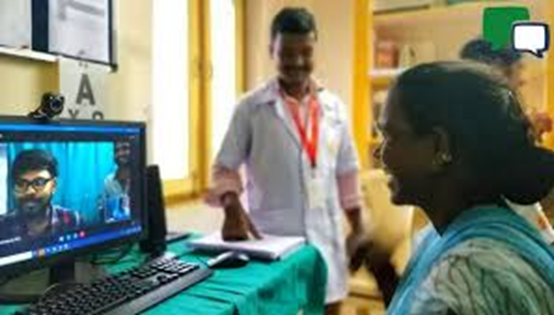Access to Quality medical services in rural India has long been a challenge due to limited infrastructure, shortage of doctors, and geographic barriers. However, telemedicine in India is transforming this landscape by bringing medical expertise to the most remote parts of the country. Through the power of digital communication, online doctor consultation in India is now more accessible, affordable, and efficient—offering a promising future for healthcare in rural areas.
What Is Telemedicine?

Telemedicine is the remote diagnosis and treatment of patients using Telecommunications technology. It eliminates the need for physical visits by allowing patients to consult doctors via mobile apps, video calls, or web platforms. This has emerged as a revolutionary tool, especially for patients in remote and underserved locations.
The Rise of Telemedicine in India
In recent years, especially post-COVID, telemedicine in India has gained significant traction. Government initiatives like eSanjeevani, Ayushman Bharat Digital Mission (ABDM), and the National Digital Health Mission (NDHM) have made virtual healthcare both mainstream and legitimate.
The Indian telemedicine market is projected to reach over USD 5.5 billion by 2025, driven by rising internet penetration, smartphone usage, and digital literacy even in Tier 2 and Tier 3 cities.
Telemedicine Benefits for Rural India
The telemedicine benefits for rural populations are substantial:
- Accessibility: Patients in remote villages can consult qualified doctors without traveling long distances.
- Affordability: Teleconsultations reduce transportation, waiting time, and hospital admission costs.
- Availability of Specialists: Patients can connect with specialists from urban hospitals who might not be available locally.
- Timely Care: Early detection and treatment reduce complications and improve outcomes.
- Continuity of Care: Follow-up appointments and prescription renewals can be done digitally.
Challenges in Rural Healthcare and How Telemedicine Helps
Healthcare in rural areas faces multiple obstacles:
- Limited healthcare infrastructure
- Inadequate number of trained medical professionals
- High out-of-pocket expenses
- Lack of awareness and health education
Telemedicine helps bridge these gaps by:
- Reducing dependency on physical infrastructure
- Leveraging local health workers as digital intermediaries
- Educating communities about preventive healthcare
The Future of Telemedicine in India
As internet and mobile coverage continue to expand, telemedicine in India is poised to become an essential component of the country’s healthcare delivery system. Technologies like AI, remote monitoring, 5G, and wearable health devices will further enhance the quality of virtual care.
Conclusion
Telemedicine is no longer just a convenience—it’s a necessity for transforming healthcare in rural India. Platforms like Rxpert are helping lead this change by offering scalable, affordable, and effective healthcare delivery models that can reach the most marginalized communities. With the growing adoption of online doctor consultation in India, we are one step closer to achieving the goal of affordable healthcare for all.



